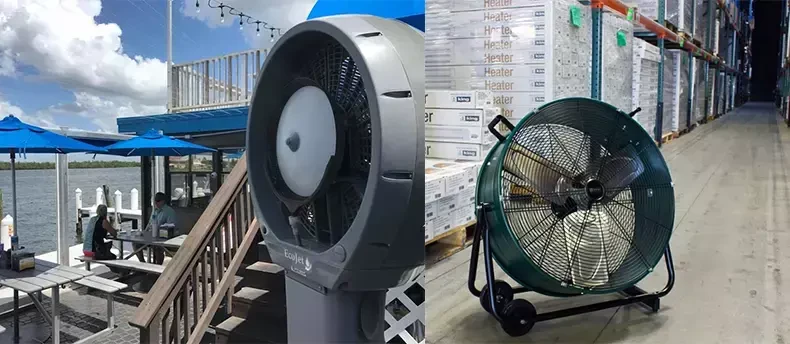Industrial fans are designed to blow large volumes of air. They find use in exhaust cleaning, dust removal, cooling, drying, ventilation, and more. These fans are used in many industries, including HVAC, exhaust, transportation, glass, cement, textile, paper, and many other industries. For you to benefit from the fans you install, you have to choose the best.
The top five factors to consider when choosing industrial fans include:
1. Fan Design
The fan design is perhaps the most important factor when buying industrial fans. There’s a wide array of fan sizes and types, and what you choose should fit your needs. The type of fan determines its outlet pressure and airflow. The choice you make depends on your requirements. For example, some fans are better at cooling than dust removal. So you have to consider your needs before choosing a fan and even an industrial fan controller.
2. Fan Installation
Mechanical maintenance and fan installation are also crucial factors that can determine your fan choice because they determine how efficiently the fan will operate. For the impeller to work efficiently, the typical values to maintain (clearances) should be:
- The clearance of the labyrinth seal should range between 0.5 mm and 1.5 mm.
- Backplate clearance should range between 20 mm and 30 mm for an impeller of one-meter diameter or more.
- Radial clearance should range between a millimeter and two millimeters for an impeller of one-meter diameter or more.
- The axial overlap should range between 5 mm and 10 mm for an impeller of one-meter diameter or more.
3. Safety Panel
The efficiency of your fans depends on their safety margins. Safety margins are determined by the use that the fan will be put to. Generally speaking, a safety margin should not be less than 5% above the required optimum flow rate. You can talk with your fan vendor to help you determine the best safety margin for your industrial property.
4. The System’s Resistance
Resistance is a crucial parameter when choosing an industrial fan. It’s what determines the efficiency and performance of a fan. A fan with high resistance consumes more power than one with low resistance. This can result in high monthly electricity bills.
The resistance of a system may change over time. As the fan gets old, the degradation of its parts will change its resistance. So when choosing a fan, find out its current resistance and how the resistance is likely to change over time. High-quality fans may not experience significant changes in their resistance for several years. Also, check the resistance of your industrial fan controller unit because it also consumes power.
5. The cost of the fans
It’s important to work within your budget. But remember, high-quality fans cost more than low-quality fans. So, when buying a fan, you must find a balance between quality and price. Also, remember that it’s better to have a few high-quality fans than many low-quality fans.
Conclusion
Buying a fan isn’t a simple process as you might imagine. As you can see from the above factors, some considerations are technical and may make it difficult to decide which fan to buy. That’s why, when looking for an industrial fan and an industrial fan controller, it’s best to work with an expert.
Related posts
Recent Posts
- Sustainability Redefined: How Keter Group Brings the Blueprint For Better Living With Lakeside Collection October 30, 2023
- Tradingview: Unleashing the Revolutionary Power of Trading August 28, 2023
- 6 Features That Make Cantilever Racking a Smart Investment August 3, 2023
- Achieve Radiant Skin with French Professional Skin Care Brands July 10, 2023
- Use of technology and products for People with Kidney Stones June 19, 2023
- Uncovering New Opportunities for Your Medical Billing Business May 6, 2023
- 10 Reasons to Invest in Automated Insurance Claims Software May 6, 2023



